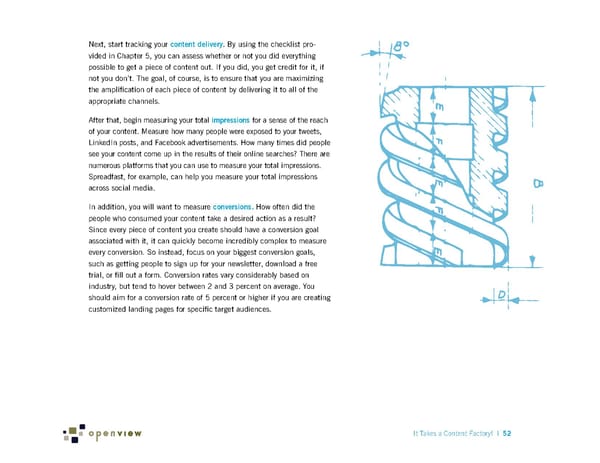Next, start tracking your content delivery. By using the checklist pro- vided in Chapter 5, you can assess whether or not you did everything possible to get a piece of content out. If you did, you get credit for it, if not you don’t. The goal, of course, is to ensure that you are maximizing the amplification of each piece of content by delivering it to all of the appropriate channels. After that, begin measuring your total impressions for a sense of the reach of your content. Measure how many people were exposed to your tweets, LinkedIn posts, and Facebook advertisements. How many times did people see your content come up in the results of their online searches? There are numerous platforms that you can use to measure your total impressions. Spreadfast, for example, can help you measure your total impressions across social media. In addition, you will want to measure conversions. How often did the people who consumed your content take a desired action as a result? Since every piece of content you create should have a conversion goal associated with it, it can quickly become incredibly complex to measure every conversion. So instead, focus on your biggest conversion goals, such as getting people to sign up for your newsletter, download a free trial, or fill out a form. Conversion rates vary considerably based on industry, but tend to hover between 2 and 3 percent on average. You should aim for a conversion rate of 5 percent or higher if you are creating customized landing pages for specific target audiences. It Takes a Content Factory! | 52
 It Takes a Content Factory! Page 57 Page 59
It Takes a Content Factory! Page 57 Page 59